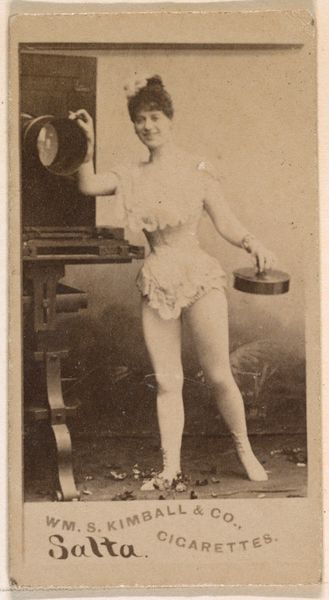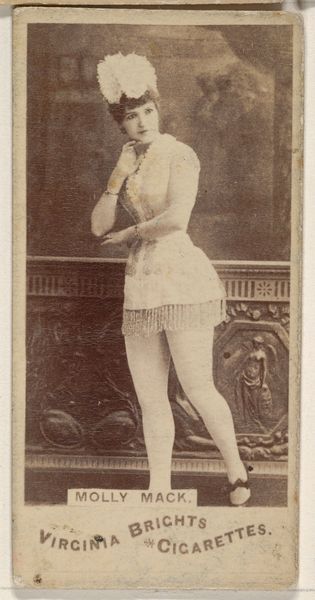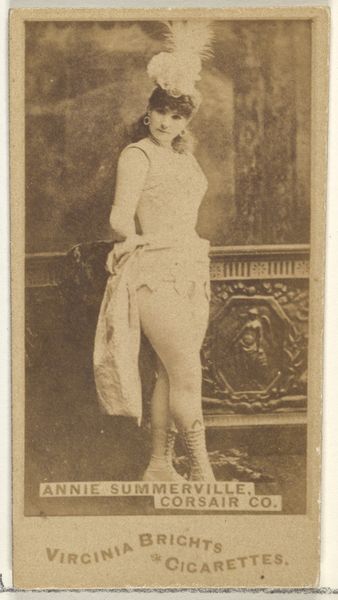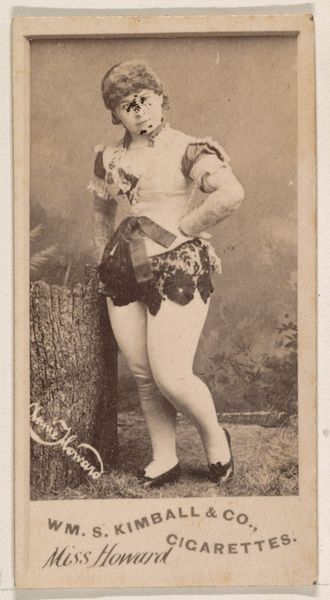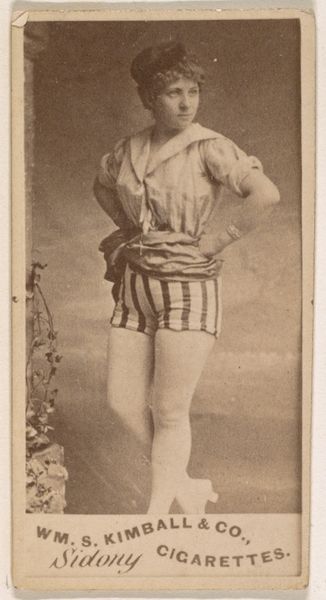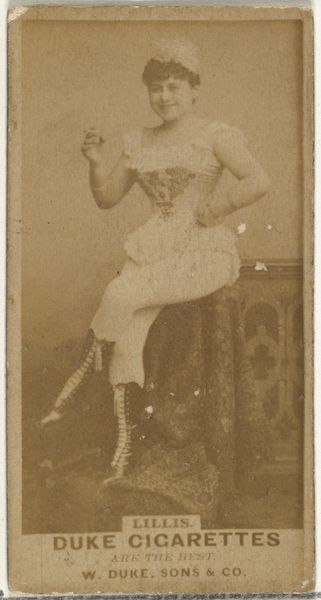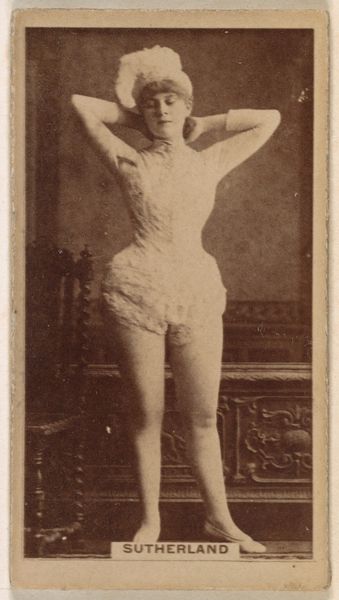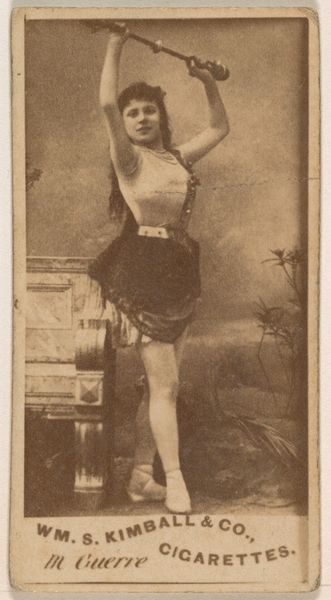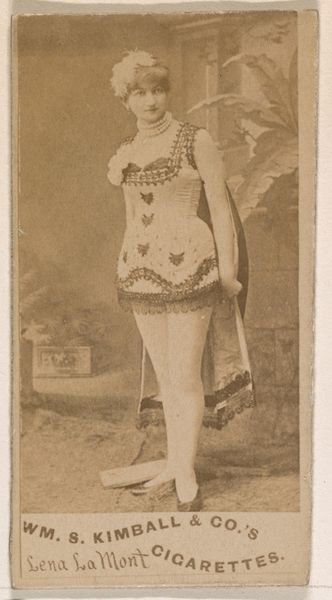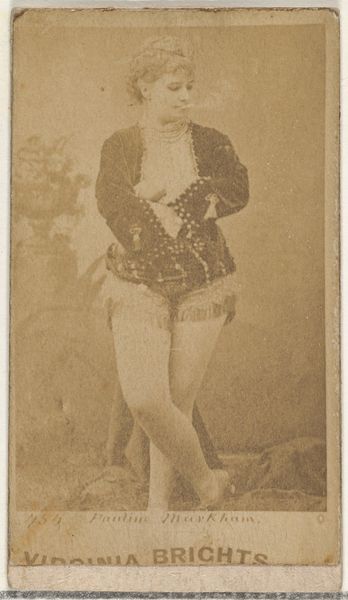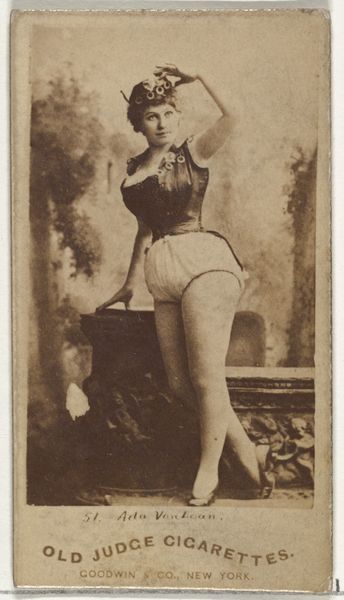
Zampa, from the Actors and Actresses series (N145-3) issued by Duke Sons & Co. to promote Cross Cut Cigarettes 1880s
0:00
0:00
drawing, print, photography
#
portrait
#
drawing
# print
#
photography
Dimensions: Sheet: 2 11/16 × 1 3/8 in. (6.8 × 3.5 cm)
Copyright: Public Domain
Curator: What strikes me first is the overt theatricality—almost vaudevillian. Editor: Exactly! It's a card featuring "Zampa," from the "Actors and Actresses" series produced by W. Duke, Sons & Co. in the 1880s, as a promotional item for Cross Cut Cigarettes. What we’re really looking at is a moment in the social history of advertising meeting performance. Curator: Absolutely, we need to consider its function. This wasn't meant to hang in a gallery, right? It was part of the larger apparatus of capital: designed for mass distribution and consumption, likely inserted in cigarette packs as a collectible premium. Editor: And that placement is loaded with meaning. The card promotes not just cigarettes but also ideals around performance, celebrity, and feminine beauty, all neatly packaged for the late 19th-century consumer. It raises important questions about the commodification of the female image. Curator: You are right: the means of production matter so much. It makes you think about the lives of the workers involved. And consider the materials: thin card stock, the sepia-toned photograph or print. All about reproduction, about ease and low costs. Editor: There's an unsettling dissonance between the working class producing these cards and the bourgeois aspirations being sold. It highlights social inequalities and the exploitation inherent in such consumer culture. We're left contemplating who exactly had access to, and who was meant to benefit from, these representations. Curator: By analyzing the materials and modes of production, we can see how it differs radically from so called "fine art" productions. Editor: Absolutely. It provides valuable insight into the intersection of marketing, art, and the social dynamics of its time. I am really thinking now of this image, in conjunction with gender performativity... Curator: Yes... and this allows to understand better the nuances that surround this type of art!
Comments
No comments
Be the first to comment and join the conversation on the ultimate creative platform.
